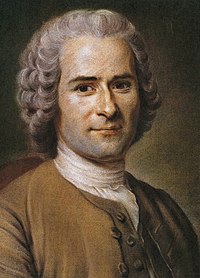
Photo from wikipedia
Abstract Recent studies of moral discourse and argumentation highlight the pervasiveness of morality in everyday life, and how the public sphere is shaped by moral ‘stuff’: speech acts, narratives, accounts… Click to show full abstract
Abstract Recent studies of moral discourse and argumentation highlight the pervasiveness of morality in everyday life, and how the public sphere is shaped by moral ‘stuff’: speech acts, narratives, accounts and the like. By taking a discourse analytic orientation, this article joins this line of research, and delineates the situated and interactional nature of moral argumentations and rhetoric. The article focuses on the role moral discourse plays in the formation of the public sphere, as conceptualized by Habermas, and specifically on moral discourse (co-)produced by museums and by their visitors. As cultural public institutions, museums play an important role in shaping the public sphere both thematically (topically) and materially (communication technologies and materialities of display and participation). In recent years, museums have shifted to more interactive modes of operation, where visitors are invited to participate in the public sphere by producing discourse in situ. This study explores museum questions and visitors responses in a large Jewish cultural/heritage museum in the Unites States. The study first looks at the museum apparatuses, through which discourse is publicly invited, produced and presented, to then study visitors’ responses as moral discourse. The analysis critically highlights the dramatic quality inherent to moral scenes, and depicts and discusses how visitors’ texts selectively address the moral Actor, Action and Motive as parts of the social moral drama they evaluate.
Journal Title: Discourse, Context and Media
Year Published: 2017
Link to full text (if available)
Share on Social Media: Sign Up to like & get
recommendations!